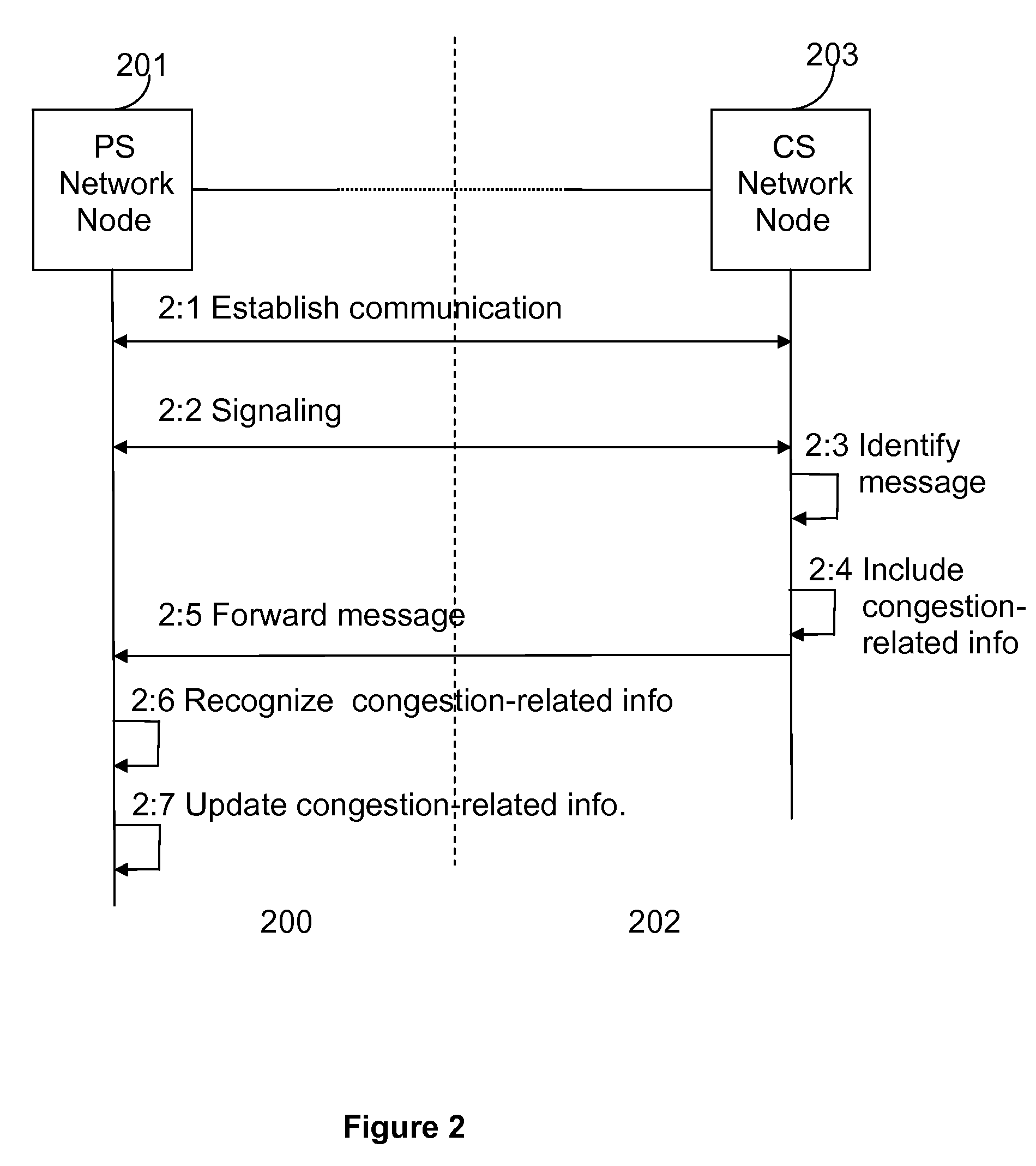Method and apparatus for congestion control for inter-working communication networks
a technology of inter-working communication and congestion control, applied in the field of wireless communication, can solve the problems of no standardized mechanism for congestion situation in the 1xrtt system, no support for reducing the load originating from incoming mt/mo call attempts, and the involvement of lte/1xrtt vendors
- Summary
- Abstract
- Description
- Claims
- Application Information
AI Technical Summary
Benefits of technology
Problems solved by technology
Method used
Image
Examples
Embodiment Construction
[0042]In the following, methods for enabling congestion-related information transfer between two inter-connected cellular communication systems will be described in further detail. More specifically the methods include a method for enabling congestion-related information of a cellular communication system that supports circuit-switched services to be available also to another inter-connected cellular communication system, supporting packet-switched services, without requiring any dynamic inter-working activities between respective OAM systems for the two communication systems. In addition, cellular communication systems that are configured to execute the suggested method will also be described in further detail below.
[0043]One reason for using the suggested method is to enable user equipments and / or the infrastructure of the terminating communication system to use the congestion-related information as a basis for decisions on upcoming CSFB attempts. By utilizing a transporting mecha...
PUM
 Login to View More
Login to View More Abstract
Description
Claims
Application Information
 Login to View More
Login to View More - R&D
- Intellectual Property
- Life Sciences
- Materials
- Tech Scout
- Unparalleled Data Quality
- Higher Quality Content
- 60% Fewer Hallucinations
Browse by: Latest US Patents, China's latest patents, Technical Efficacy Thesaurus, Application Domain, Technology Topic, Popular Technical Reports.
© 2025 PatSnap. All rights reserved.Legal|Privacy policy|Modern Slavery Act Transparency Statement|Sitemap|About US| Contact US: help@patsnap.com



